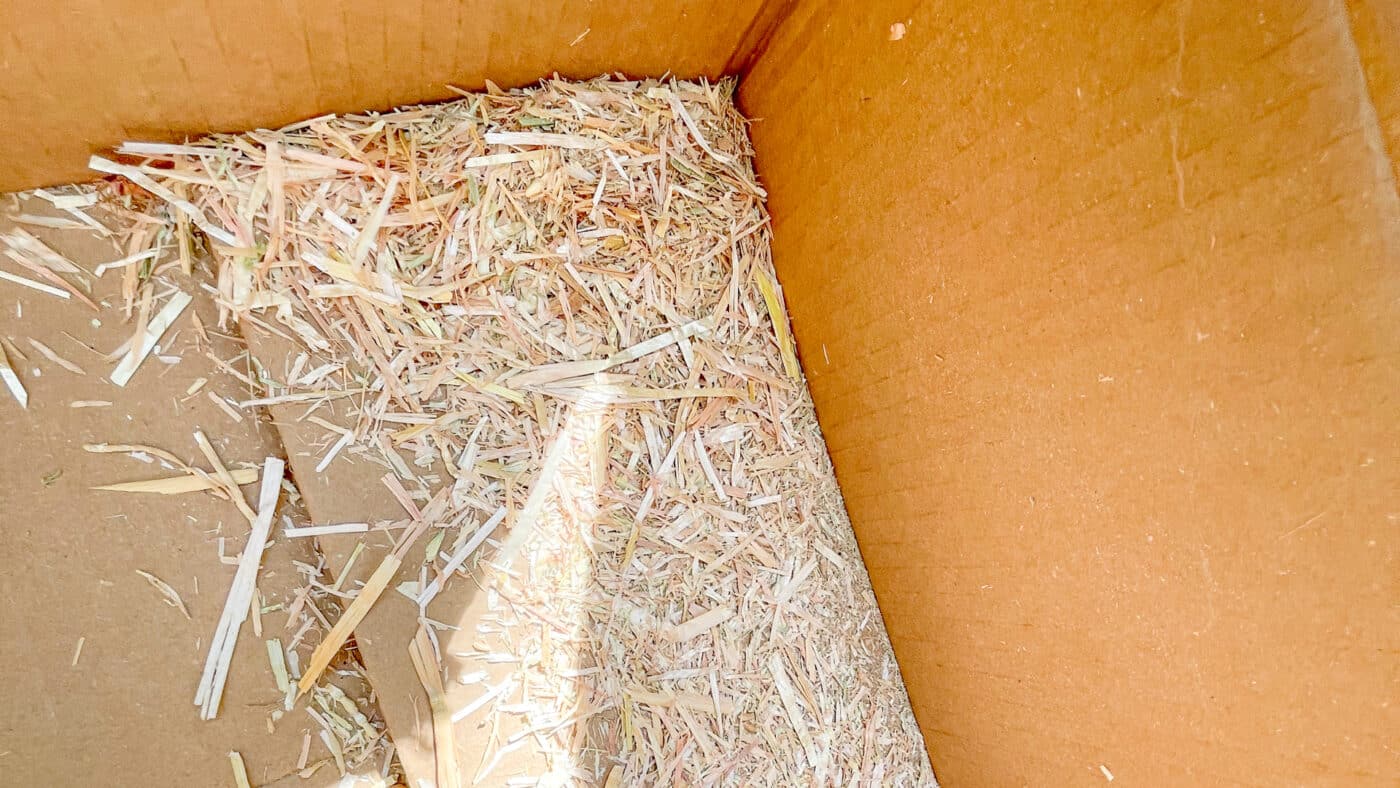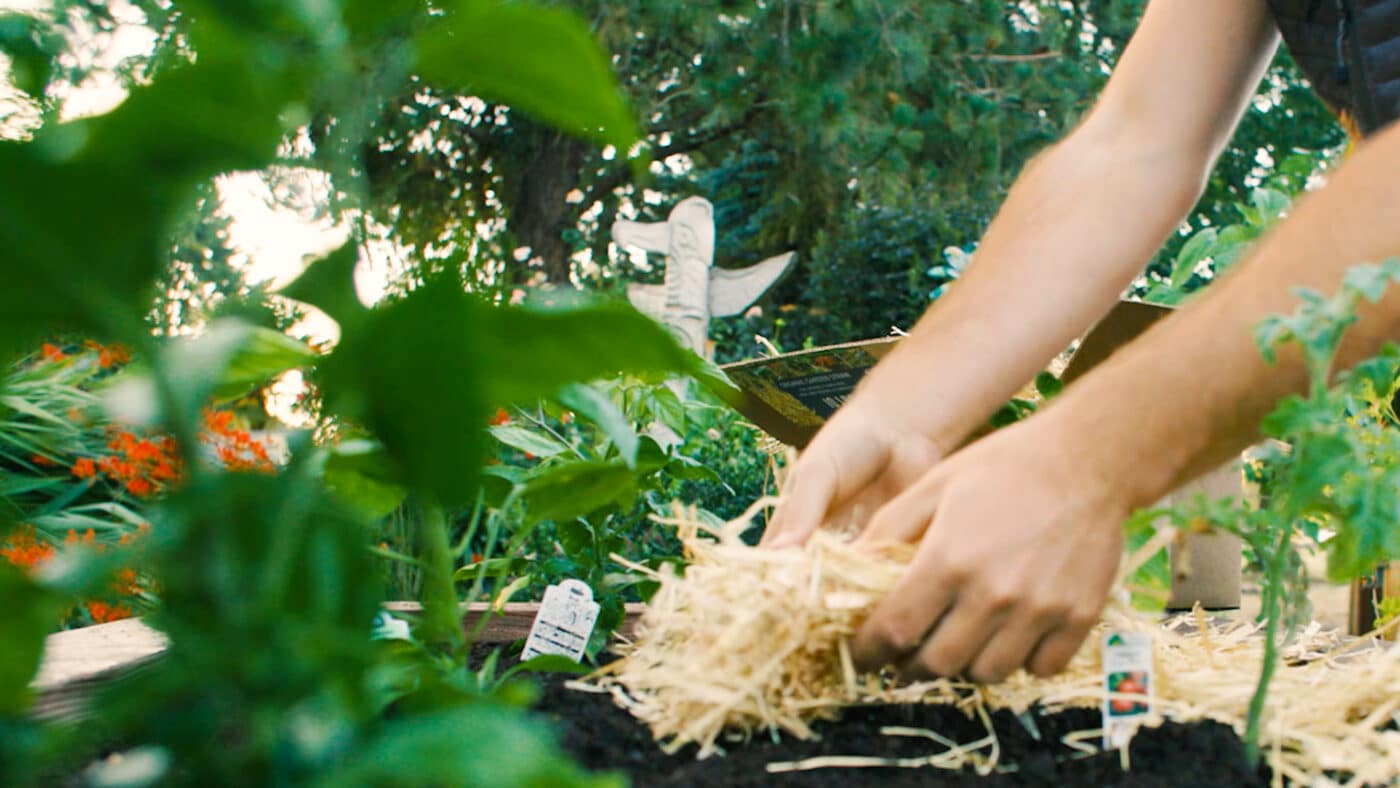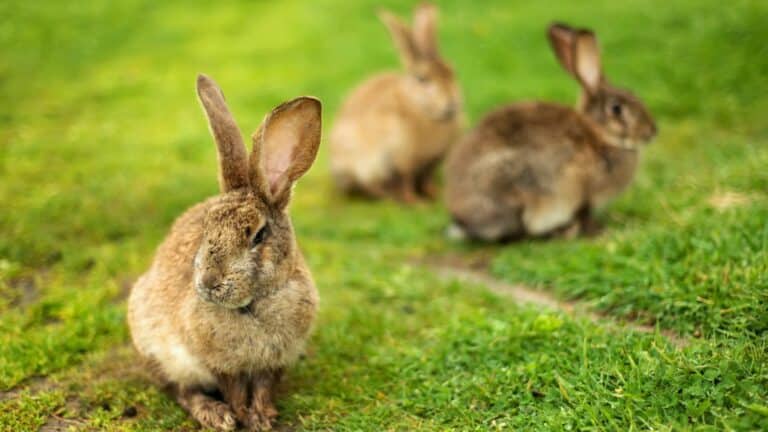
50% Off Our Old Packaging – Same Fresh Hay, Just a New Look Coming Soon!
For a limited time, all hay products are 50% off. Fresh, nutritious, and perfect for rabbits, guinea pigs, and more!

For a limited time, all hay products are 50% off. Fresh, nutritious, and perfect for rabbits, guinea pigs, and more!
Stay in the loop on NEW products and deals!


Straw garden mulch is a growing interest for many hobby gardeners, organic farmers, and others. This article is designed to be an in-depth guide about straw garden mulch, including its benefits, uses, and just about everything else you need to know about it.
Before we get started, let’s define what straw garden mulch is. Straw garden mulch is a popular garden mulch that comes from the stems of grains, e.g., wheat, oats, etc. Adding straw to your garden in the winter or spring is most common, although it can technically be applied at any time of the year.
With that out of the way, let’s get started!
Yes, straw is a very good garden mulch that can be used in any season because of its wide-ranging benefits.
Straw is light, clean, easy to work with, and composts (or breaks down) fairly easily. Here are some other critical benefits of straw garden mulch:

This is a common question that can easily be confused. Straw is an excellent type of mulch. However, by saying “mulch,” you probably are thinking of wood chips, shredded bark, manure, or other darker composts.
So, in this question, we’re actually comparing two types of mulch…darker composts and straw. Let’s go!
So, is “mulch” or straw better? It depends, but probably the best choice is actually a combination of the two types. We’ll further break down the differences below.
| Type | Pros | Cons |
| “Mulch” | Better moisture barrier than pine straw; more cost-effective in the long-term than pine straw; stays in place longer; provides extra nutrients | More expensive initially; covers less ground than pine straw |
| Pine Straw | Easier to spread; cheaper to buy initially; no need for advanced knowledge of gardening to use pine straw; rearranging straw after first spread is easy | Doesn’t last as long (purchase more often); may put too much acid into soil; can be easily blown by the wind |
| Garden Straw | affordable; easy to spread; excellent moisture retainer; great insulator; protects grass from scouring; keeps cool season crops from bolting to soon | May contain seeds (make sure to shake out chaff before applying) |
Whether to combine straw and “mulch” depends on the type of garden you have and the type of climate that you live in.
We think that the best straw for garden mulching is organic garden straw. However, we’ll let you decide for yourself; here’s a breakdown of 4 different kinds of garden mulch, including the pros and cons of each.

Price Estimate: (for 5-25 lbs.)


(shop our family-grown, organic garden straw here)
Typically derived from cereal and grain crops, garden straw is an excellent choice that can be used in a variety of different climates and purposes for your garden.
Garden straw keeps moisture retained in your garden in the hot summer months and insulates your garden in the frigid winter. We’ve mentioned some above, but here are some more pros to straw garden mulch…and some cons.
Price Estimate: $1.89 p/sq. ft.
Pine straw comes from…well, you guessed it! Pine trees. The “straw” of a pine tree is the pine needles, which can be collected and distributed on your garden.
The cost of pine straw can be a free mulching material if you or your neighbors have a lot of pine trees. Here are several more benefits.
Price Estimate: $1 p/sq. ft.
Nobody wants to mulch their gardens in the fall only to find millions of weeds popping up in the spring. Certified weed-free straw mulch lets you rest, knowing that that shouldn’t be too much of an issue.
Typically, the seeds are eliminated through steam-treating the straw. Another way is also to spray your garden.
Price Estimate: $29.95 p/40 qt.
Once useless, rice straw now has found value for gardeners as a straw mulch. One of the best benefits of rice straw is that it is clean and doesn’t carry additional weed seeds that can cause issues in your garden down the road. Derived from lignin, cellulose, and hemicelluloses, rice straw is essentially a byproduct that is removed along with the rice grains.
Rice straw is another great straw for vegetable gardening for the following reasons:
To sum it up, we’ve put together a table overview to recap:
| Type of Straw Garden Mulch | Description | Pros | Cons | Price/Cost |
| Garden Straw | Very common and popular mulch that is used in a variety of different garden climates and purposes | Affordable, composts and adds nutrients to soil, prevents hidden weeds from growing, encourages worm habitation, blocks weed growth, can prevent diseases | Usually contains some seeds, can be a hide-out for small critters | From $39.99Select options This product has multiple variants. The options may be chosen on the product page |
| Pine Straw | Needles from pine trees used as straw garden mulch | Easy to spread, good protection against soil compaction, lightweight | Allows for light and moisture to reach weed seeds allowing for weed germination, high acidity level before composting | $1.89 p/sq. ft. |
| Certified Weed-Free Straw Mulch | Weed seeds are eliminated from straw through steam or spraying field | Weed-seed free, gives you peace of mind because of know weed growth | More expensive, spray can put herbicides on straw, some certified weed-free straw has wheat or barley seeds | $1 p/sq. ft. |
| Rice Straw | Clean, byproduct of rice, typically contains no weed seeds | Bio-degradable, neutral pH, doesn’t usually contain weed seeds | Possibly pest pressure, not very easy to find quality rice straw | $29.95 p/40 qt. |
Again, we recommend garden straw as the best straw for garden mulch (you can see our family-grown, organic straw here).
Although straw mulch on flower beds or vegetable gardens may attract small critters, straw garden mulch can actually decrease the insect population in your garden.

Applying straw garden mulch for your vegetable garden is a very simple process that doesn’t require any past knowledge or experience. While we can’t speak for every company, here’s how we recommend using/applying straw mulch on your garden.

In order for a maximum amount of straw to be put in each delivery box, the straw may be clumped together. As you unbox the straw, pull the straw apart and loosen it so that it is not compacted.

This is probably the most important part of the application process. Make sure you thoroughly shake out the chaff back into the box.

Spread the straw garden mulch generously (3”-4”) over new seeding beds or around plants in your vegetable garden as a protective layer from heavy rain, wind, and scouring.
Interestingly, straw mulch for flower beds or vegetable gardens decomposes faster than a wood chip mulch would. If your garden is managed well, your straw garden mulch will decompose in several months. However, if left unattended, it may take up to 1-2 years.
Straw mulch’s golden color, however, will not last very long at all. One option to solve this would be to set up a recurring order of garden straw to spread on your garden every couple of weeks or months.
We can’t speak for other companies, but our straw garden mulch costs…


One of the three types of straw that we compared earlier in the article, Blue Mountain Hay’s organic straw garden mulch is an affordable option per square foot. Here’s a breakdown:
* Note: We offer 3 sizes of garden straw, so it costs the same to mulch a 20×30 and a 20×20 garden e.g.
What’s more is that we grow our straw fresh in the Pacific Northwest on USDA Certified organic fields–free of chemicals, artificial colors, preservatives, flavorings, chemicals, and additives.
Unlike fabrics and covers, organic straw is very good for your garden. It’s also good for the earth and the environment. Plus, our organic garden straw products combine affordability, freshness, and quality altogether!
It’s up to you! Mulching your garden can happen in any season! We’ll break it down by season, and you can decide what works best for you from there. Remember, “when to mulch” depends on the climate you live in and the kinds of plants that you are growing.
It’s a good idea to garden mulch in the fall because you’re then much better prepared for spring. Although it’s important not to be impatient and mulch too early in the fall, a good time to mulch your garden with straw in the fall would be after the first hard freeze.
Here’s a helpful article to learn about why mulching your garden in the fall is a good idea.
Here’s a list of reasons why it’s great to mulch your garden with straw (you can view our family-grown, fresh [and organic] garden straw here) in the fall:
Again, after the first hard frost, it’s a great idea to put straw on your garden for the winter. This keeps the temperature stable at around 0° F (freezing), which allows your plants to remain dormant (essentially plant hibernation) throughout the winter months.

In the winter, it’s important not to put straw on your garden before the first hard frost, because heaving and thawing may then occur to your plants.
Note: heaving is when extreme and quick fluctuations in temperature cause your plants to uproot.

If you mulch too late after the first hard frost, you may keep the ground at a consistent temperature that is too low (below freezing), possibly killing your plants.
Although some say late winter or early spring, mid-to-late spring is a great time to spring mulch your garden with straw. Of course, this depends on the climate you live in. For example, if you live in a dry area, early spring may be an acceptable time to mulch. If you live in a climate with frigid winters, mulching in the fall or winter is probably a better idea.
Here’s the bottom line with spring straw garden mulching: be careful as to how early you mulch in the spring because the soil is still warming up from the winter, and if you mulch too early, the ground will not be able to warm up as fast.

Once the ground is warm, summer mulching is another great time of year to mulch your garden with straw.
Yes, straw is a type of winter mulch and will protect your plants in the winter! Winter mulches are organic materials used to protect plants in the winter by covering the garden beds.
As we mentioned earlier, it keeps your plants from heaving and thawing in the winter, protects them from quick thawing or freezing, and staves off cold rain and winds by keeping the temperature at fairly consistent freezing temperatures. It also protects your garden from compacting (losing oxygen in the soil because the soil becomes more tightly packed and denser) in the winter.
It also is a good insulation for shrubs and provides good air circulation in your garden while also not smothering your plants.
To sum up, your vegetable garden would be kept safe and sound in the winter with straw garden mulch.

Whew! That was a lot of info!
To recap, garden straw is an exceptional mulch for your vegetable garden that has many benefits and can be used in any season of the year.
We’re a family-owned company that grows hay and straw products in the Pacific Northwest (learn more about us). We offer hay and straw products for hobby farmers, pet owners, and organic gardeners. We also ship our products in bulk internationally.
If you’re looking for a supplier of fresh straw for your garden, we would love to provide you with our family-grown, fresh, organic garden straw. You could even set yourself up for recurring orders and save up to 15%, while also not having to worry about reordering straw mulch for your garden (believe it or not, this mulch also works great as straw bedding for chickens, straw bedding for rabbits, straw bedding for cat shelters, or straw mulch for winter gardens). Try it for yourself!




Got questions about which hay options are best for your pet rabbit? You’ve come to the right spot!

Don’t allow yourself to be ignorant about RHDV2. Read this article for more information!

Keep your plants cozy and safe this winter! Read our article on the many advantages of straw mulch during the winter months and how you can effectively use straw.